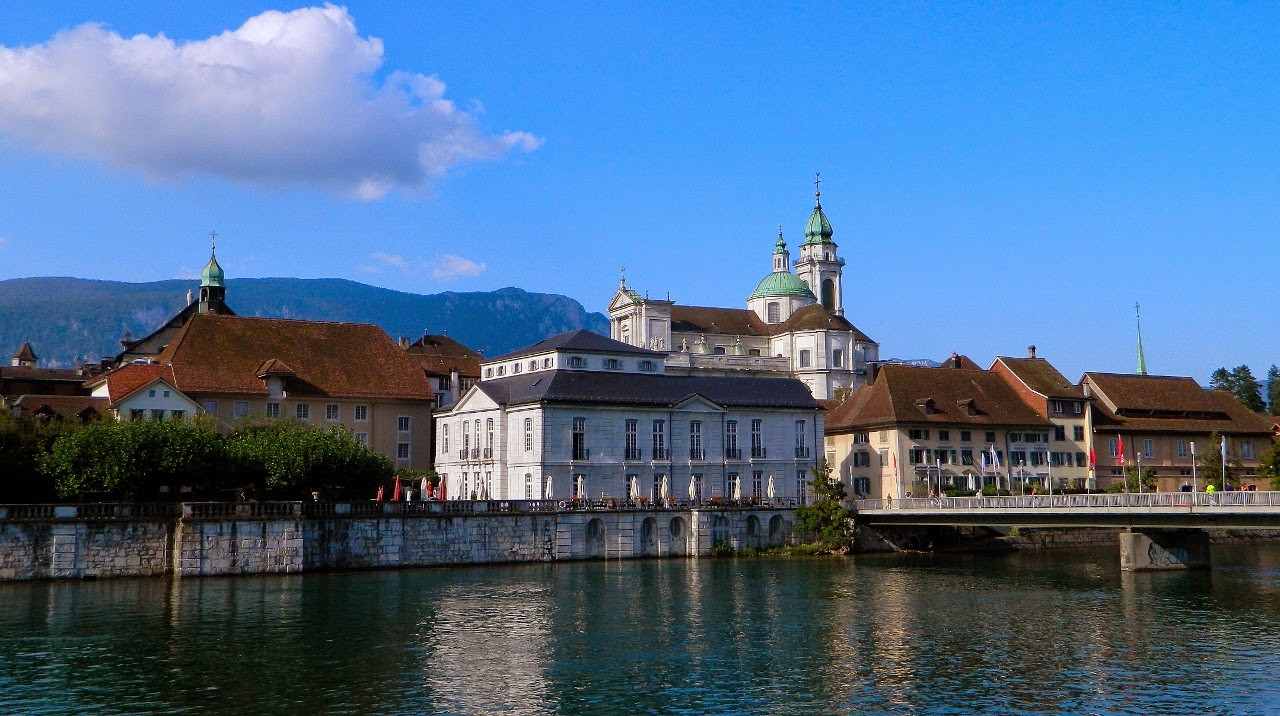We also got a helpful mechanic to check out one of Bertha’s tyres which had cut slightly on debris on the road. We didn’t want a blow out in the Alps! He declared ‘alles gut’ and we were on our way, relieved, and through the Swiss border post in minutes.
With a new vignette (a pass to use Swiss motorways) proudly attached to the windscreen we drove through green fields and valleys to Solothurn, Switzerland’s ‘most beautiful baroque city’.

Arriving on bikes at 5pm, the weekly market was in full swing in the winding streets and bustling with an international crowd of sellers and hawkers.

At street level we meandered through the stalls and past the many fountains that boast 16th century painted figures. This was a first taste of a style of public decoration we would see much of in the major Swiss towns. The lively figures represent local heroes, saints and allegory and are grandly painted in bright colours and gold.
Back across the river we meandered amongst locals enjoying a glass of wine or beer at riverside bars with views of the old town. The early evening had a busy cheerful feeling and there was a definite ‘after work’ feel amongst the gangs of laughing and gossiping suited men and women.
We pedalled along the riverside passing boys fishing in the river and greeting families out for a stroll along the banks in the warm sunshine. Back at Bertha we saw the sunset over the last mountain of the Jura, the Weisssenstein, which we planned to climb the next day.
A first taste of the Swiss masters showed powerful and expressive landscapes, allegorical figures, sweet rural scenes, striking portraits and early symbolism. The Vallotton, along with old favourites such as Van Gogh, Matisse and Klimt were our highlights.

It was easy-going but continually uphill and we kept up a quick march to reach the top and allow time to return two and a half hours later for the bus. If we missed it, we would have a four hour wait for the next one.

The rising mists made it difficult to see the valley below but the River Aare shone silvery along a series of ox bow bends and a break in the gathering clouds suddenly revealed Lake Neuchatel mirror-like and gleaming to the west of us.

Relying on gravity to keep us on the mountainside we gingerly found footholds in the loose and slimy stones that may or may not have been an intended trail. The need for speed made it a determined descent and it was a relief to cross into forest and then come out at the top of a grassy ski slope.
The speedy jog down its steep bank was a childish delight and we were rewarded with the sight of the yellow bus winding its way up to collect and return us back to river level far below.
The sun shone for our cycle back to the camp where we looked up to the mountain we had conquered!





